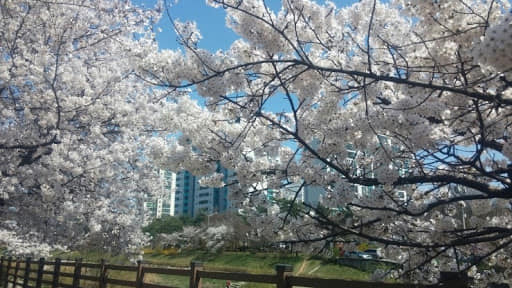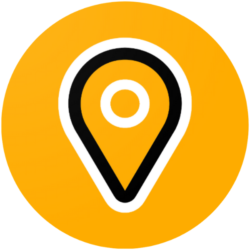
Spring Festivals in South Korea
Do you love a fun festival on a beautiful spring day? Don’t miss the spring festivals across South Korea. If you already know about festival culture in South Korea, click here to jump to the spring festival list.
Spring in South Korea
Many consider spring in South Korea as March, April, and May. Therefore, we have selected festivals occurring from March to May for our Spring Festivals list. However, such festivals may begin earlier than March or end later than May.
Korean festivals may occur over many months. During these months the weather quickly changes and begins to warm up, bringing in new growth in plants, beautiful blossoms and the cold weather begins to move out. If you love a festival, you may want to visit more than one and take friends.
South of Seoul volunteers choose to combine spring festivals in one post since many cover more than one month or change months depending on the year. Therefore, it made more sense to organize festivals by season rather than month by month.
Large Spring Festivals in South Korea
During the spring months, Korea loves to host flower-focused festivals. The weather tends to be warming up and people are excited about being outside before it gets hot. You will want to dress in layers.
Some festivals may be promoted nationally and internationally while others may only be promoted in the neighborhood or city hosting the event. It can often feel frustrating trying to stay on top of each festival.
Finding National Promoted Festival Information
Large, nationally promoted festivals may have English information and promotion. The best location for large nationally focused festival information is the Visit Korea website. Visit Korea is a non-profit government-affiliated organization that provides tourist information in a variety of languages.
Basically, Visit Korea exists as a primary source of information. Non-Korean-speaking bloggers use this website to create many of their seasonal blogs. This means you don’t actually need to hunt through blogs to find current festivals, just go straight to the Current Festivals section of the Visit Korea website.
National Festivals May Change Months, Dates, or Seasons
Over time, the large festival details may change. You can’t be sure that a festival held in August one year might not be in September the next year. Date changes occur for a variety of reasons based on city budgets, national holidays, the fact that Korea runs off of two types of calendars, etc. It’s not a problem that dates change, it just means we always need to double-check each year.
You should always check the Visit Korea website for current information.
Festival Announcements
Korean festival marketing campaigns may only start 1-2 weeks before an event. This means that you need to be ready to take action when you start seeing the advertising. Don’t expect extensive advertising for a festival 1-2 months away. It’s easy to miss a festival if you don’t know what time of year it may happen.
Festivals May Be Ticketed, Free, or Mixed Methods
Each festival planning committee makes its own decisions regarding pricing. Korea often has three types of festivals: free, ticketed, and mixed methods. The different types break down like this:
- Free – Entrance to the festival and all events are free and unticketed
- Ticketed – To enter the festival requires a ticket
- Mixed Methods – Entrance to the festival is free but you may need to pay for access to shows, games, events, etc.
Festival Parking
Large, nationally focused festivals tend to offer extensive amounts of parking that may be paid or unpaid. Remember, extensive parking and large festivals also may mean that arriving at and leaving the festival by car may require extra time.
Many festival attendees may choose to take public transportation to the festival. Taking public transportation may help a person avoid the stress of parking and queuing to park.
Festival Events and Activities
South Korea has its own festival culture. They do not base their festival experience off of festivals from other countries. This means that the foods, games, and experiences you may be accustomed to in your home country may not exist at Korea Festivals.
Additionally, Korean festival culture revolves around the Korean experience. This means international culture may mix with Korean festival culture in unique ways. Each year festivals may evolve a little and change as Korea changes and culture moves in different directions. Korean society, like any society around the world, changes with time.
Nationally Promoted Spring Festivals in South Korea
The following large, nationally promoted festivals generally happen each year in South Korea. This list may change from year to year. Organizers may cancel festivals and organizers may add new festivals to the list.
Always check with the Visit Korea Current Festivals list to determine when festivals may occur.
Light Festivals
- Boseong Tea Plantation Light Festival (March)
- Lighting Festival at The Garden of Morning Calm (March)
- Jeju Fire Festival (March)
- Pocheon Herb Island Light Festival (March)
- Taean Light Festival (March)
Spring Blossoms
- Gwangyang Maehwa Festival
- Gurye Sansuyu Flower Festival/ 구례산수유꽃축제 (Often in March)
- Jeju Cherry Blossom Festival
- Nonsan Strawberry Festival (논산 딸기축제)
- Wonmisan Mountain Azalea Festival (April)
- Goryeosan Azalea Festival (April)
- Taean Tulip Festival (April – May)
- Taean Magnolia Festival (April)
- Hwangmaesan Royal Azalea Festival (April – May)
- Icheon Baeksa Sansuyu Flower Festival / 이천백사 산수유꽃축제 (March – April)
- Garden of Morning Calm Spring Flower Festival (May)
- Nami Island Cherry Blossom Festival (May)
- Goyang International Flower Festival (May)
Cherry Blossom Festivals
- Jeju Cherry Blossom Festival (April)
- Jinhae Cherry Blossom Festival (April)
- Gyeongju Cherry Blossom Festival (April)
- Hwagae Cherry Blossom Festival (April)
- Gyeongpo Cherry Blossom Festival (April)
- Yeongdeungpo Yeouido Spring Flower Festival (April)
- Jecheon Cheongpungho Cherry Blossom Festival (April)
Other Festivals
- Yeongdeok Snow Crab Festival (March)
- Jindo Sea Parting Festival (April)
- Goryeong Daegaya Festival (April)
- Yeongam Wangin Culture Festival (April)
- Yeongdeok Snow Crab Festival (April)
- Yeon Deung Hoe (Lotus Lantern Festival) (April – May))
- Mungyeong Chasabal Festival (April – May)
- Boseong Green Tea Festival (May)
- Chuncheon Mime Festival (May)
- Damyang Bamboo Festival (May)
- Chuncheon Puppet Festival (May)
- Chuncheon Makguksu & Dakgalbi Festival (May)
Locally Promoted Spring Festivals in South Korea
In addition to the nationally promoted festivals, different communities across South Korea also host localized events. These smaller festivals offer a closer connection to the local community.
Smaller, locally promoted festivals can be a great way to connect with your community. For example, such festivals may provide a chance to connect with local businesses, community organizations, and culture.

Finding Local Festival Information
Visit Korea does not include information on localized festivals. Instead, you will need to look around the smaller cities and rely on local websites and information portals. Local city websites often offer information on local festivals.
Local festival locations may only be available in Hangul. Such festivals will often be advertised on city websites, Facebook communities, and on banners around town. Everyone in the community is welcome at such festivals. Don’t get too worried about things not being in your own language.
Google Translate Chrome Extention
You can use the Google Translate Chrome extension to translate online information about local festivals.
Papago Translation for Images
If the local festival information is on an image, poster, flyer, or sign – use Papago to translate the image.

Founded in 2015, the South of Seoul team consists of volunteers on three continents working together to support English-speaking people traveling or living in South Korea. South of Seoul volunteers work with organizations and individuals across South Korea to improve equitable access to information across South Korea. Much of South of Seoul’s information focuses on Pyeongtaek, Gyeonggi-do, South Korea.
Blogs published under the authorship of “South of Seoul” include blogs compiled by multiple volunteers to improve access to standardized information unrelated to individualized personal experiences.





